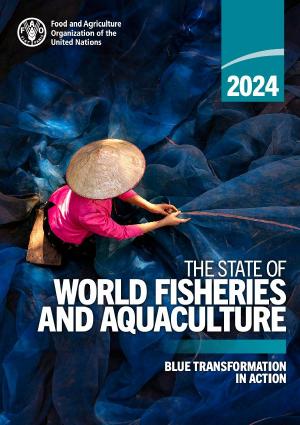
FAO 2024 Report: Sustainable Aquatic Food Systems Important for Global Food Security
2024.6.14
The Food and Agriculture Organization of the United Nations (FAO) has released its new 2024 report on The State of World Fisheries and Aquaculture. Aquatic systems are now increasingly seen as essential for food and nutrition security. However, more efforts are needed to adequately feed a growing and more urbanized population. Due to their diversity and ability to provide ecosystem services and sustain healthy diets, aquatic food systems are a promising solution for enhancing global food security and nutrition, both now and for future generations.
In 2022, global fisheries and aquaculture production reached a new peak. For the first time, aquaculture production of aquatic animals surpassed capture fisheries, reaching 94.4 million tonnes, which accounted for 51 percent of the global total and 57 percent of production.
There is a need to expand successful initiatives to reinforce the critical role of aquatic foods in ensuring global food security, nutrition, and livelihoods. Aquaculture has the potential to meet the rising global demand for aquatic foods. Future growth should focus on sustainability and prioritize the needs of regions and communities most in need.
However, as the demand for aquaculture grows, so does the need for fishmeal and fish oil. These are considered among the most nutritious and digestible ingredients for farmed fish, and they are the primary sources of omega-3 long-chain polyunsaturated fatty acids EPA and DHA in animal diets.
While the production of fishmeal and fish oil has remained stable overall, demand has surged due to the rapid growth of the aquaculture industry, as well as pig and poultry farming, and the pet food and pharmaceutical industries. In 2021, over 87 percent of fishmeal was used in aquaculture, over 7 percent in pig farming, 4 percent in other uses (mainly pet food), and 1 percent in poultry farming. Similarly, about 74 percent of fish oil was used in aquaculture, 16 percent for human consumption, and 10 percent for other uses (including pet food and biofuel).
The amount of world capture fisheries production processed into fishmeal and fish oil has declined over the last few decades. However, an increasing proportion of fishmeal and fish oil is now produced from by-products of the processing industry, which reduces waste and improves resource utilization. In 2022, 34 percent of global fishmeal production and 53 percent of total fish oil production were obtained from by-products. Utilizing by-products is an opportunity for the industry, offering ecological, social, and economic benefits while ensuring consumer health and food security.
EFFOP members source 40 percent of their raw materials from leftovers generated during the processing of fish intended for human consumption. Remarkably, up to 60 percent of fresh fish can be discarded as waste during the filleting process, even though these by-products contain valuable proteins and oils. Incorporating these by-products into fishmeal and fish oil production not only optimizes the use of natural resources but also contributes to the production of healthy aquaculture products. European producers play a vital role in the global blue value chain, linking fisheries and the utilization of side-streams to aquaculture and the consumption of healthy blue proteins.
Read the report here or here: FAO Report The State of World Fisheries and Aquaculture 2024




